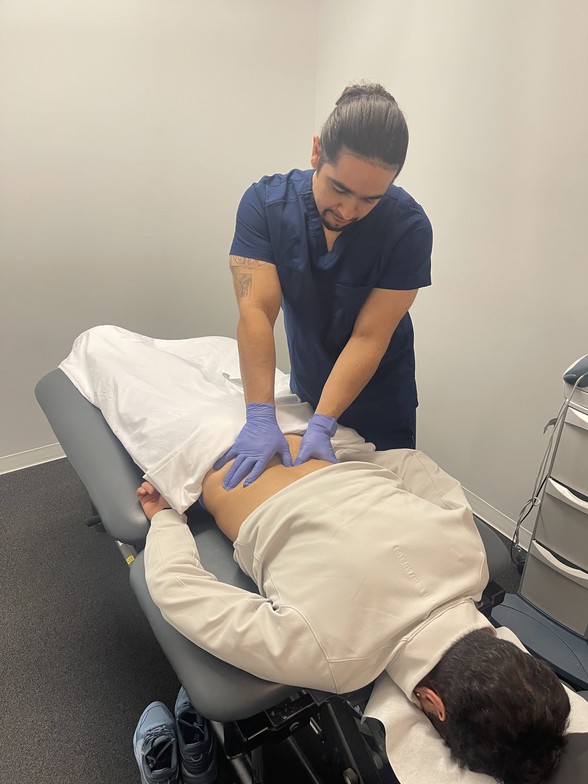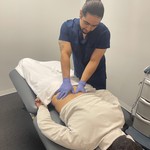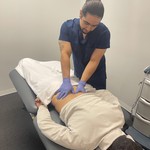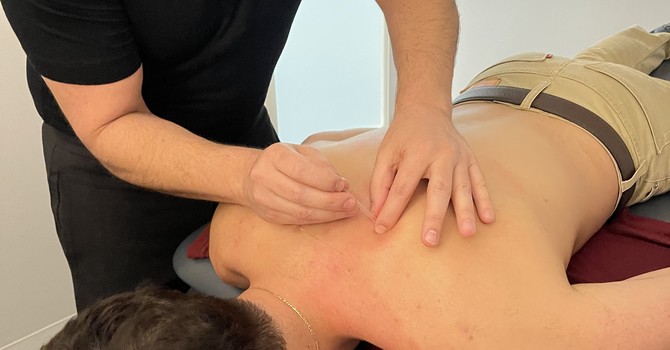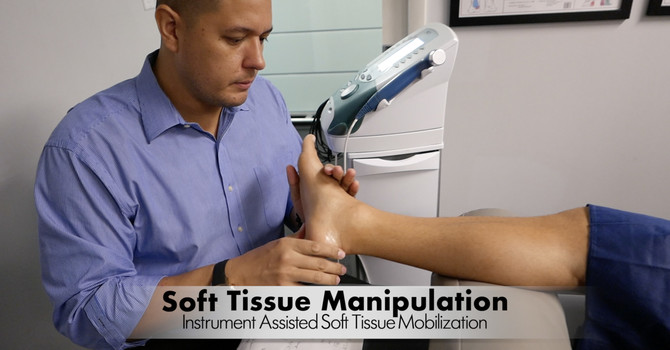Manual therapy is a clinical, hands-on approach used by licensed physical therapists and chiropractors to reduce pain, restore motion, and improve function. At PT & Chiro Miami, manual therapy is integrated with physical therapy and chiropractic care to deliver both immediate relief and long-term results.
The Two Engines Behind Manual Therapy
1. Mechanical Effects
- Joint glide and spacing. Gentle oscillations and specific thrusts improve arthrokinematics so stiff joints move more freely.
- Soft tissue extensibility. Targeted pressure and sustained stretch reduce adhesions and improve the slide of fascia, muscle, and tendon.
- Fluid dynamics. Techniques can enhance local circulation and lymphatic flow, which supports healing and reduces swelling.
2. Neurophysiological Effects
- Pain modulation. Stimulating skin, muscle, and joint receptors alters pain signaling and reduces protective muscle guarding.
- Motor control reset. Restoring joint and tissue input helps the nervous system reorganize movement patterns for smoother, safer motion.
What Happens During a Manual Therapy Session
- Assessment. Your clinician reviews history, screens for red flags, and evaluates posture, motion, and tissue quality.
- Technique selection. Based on your goals and level of irritability, the clinician applies one or more methods, such as joint mobilization, soft tissue mobilization, myofascial release, or trigger point therapy.
- Reinforcement. You perform targeted exercises to secure the new range and improve strength and control.
- Education. You receive guidance on posture, load management, and a short home program.
Common Manual Therapy Techniques
- Joint mobilization. Graded glides for stiff or painful joints.
- Manipulation. Quick, specific thrust of small amplitude after safety screening.
- Soft tissue mobilization. Targeted pressure and shear to address tone and adhesions.
- Myofascial release. Sustained low load stretch to improve fascial glide.
- Trigger point therapy. Focused compression on pain-referencing nodules within the muscle.
- Neural mobilization. Gentle nerve gliding to reduce mechanosensitivity.
- Lymphatic techniques. Rhythmic strokes to assist fluid movement after injury or surgery.
Why Manual Therapy Works Best With Exercise
Hands-on care prepares tissues to move. Exercise helps lock in gains by building strength, endurance, and coordination. At PT & Chiro Miami, your plan combines manual therapy with progressive rehabilitation to ensure lasting improvements. Explore our manual therapy services to see how this integration works.
Who Benefits From Manual Therapy
- Acute or chronic neck and back pain
- Shoulder, hip, or ankle stiffness
- Tendinopathy or myofascial pain
- Post-surgical scar or swelling management
- Movement limitations that resist exercise alone
Safety and Contraindications
Licensed clinicians screen for conditions such as acute fracture, active infection, severe osteoporosis, or unremitting night pain. Technique type and dosage are tailored to your presentation to ensure care is safe and effective.
Get Started With Manual Therapy in Miami
If pain or stiffness limits your day, our team can help you move with confidence again. Contact PT & Chiro Miami to schedule an evaluation and learn how a customized plan can support your goals.
FAQ: How Manual Therapy Works
How many sessions will I need?
Plans vary based on diagnosis and goals. Many people notice early changes within one to three visits, with lasting gains over several weeks when combined with exercise.
Does manual therapy hurt?
You may feel pressure or mild discomfort that stays within your tolerance. Techniques are adjusted to your comfort and the stage of healing.
Can manual therapy replace exercise?
Manual therapy and exercise work best together. Hands-on care reduces restriction while exercise builds durable capacity.
Who performs manual therapy?
Licensed physical therapists and chiropractors commonly provide manual therapy. Choose a clinician who explains the plan and pairs hands-on care with movement training.
Dr. Joseph Hudson
Contact Me